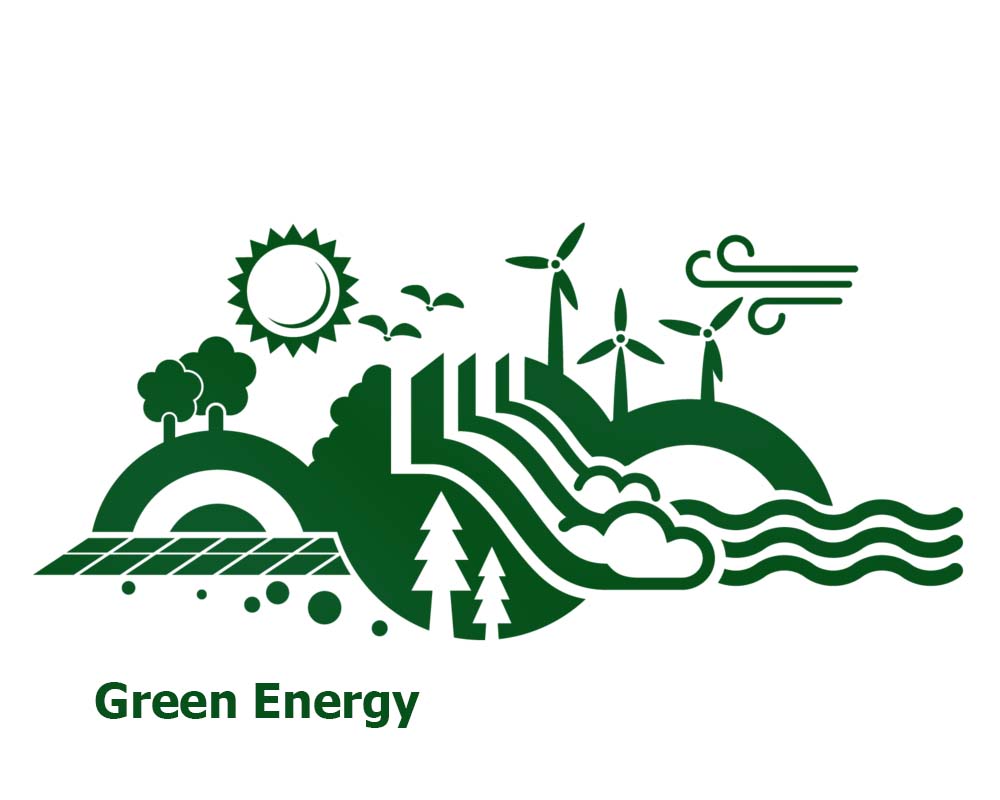We live in a world where everything around us is energy. It’s essential to identify and harness it correctly, which can be done in two ways. One way is to devise our own methods of extraction, which is quite challenging and requires imagination and time. The other way is to invest in green energy, which is relatively straightforward but requires the right information to assess the benefits and risks. You can learn more about this by reading this article to the end.
What is green energy?
Clear energy refers to energy derived from natural resources that are replenished continuously or sustainably over time. Unlike fossil fuels, which are finite and non-renewable, renewable energy sources include sunlight, wind, rain, tides, waves, and geothermal heat. These sources of energy are abundant and can be harnessed to generate electricity or provide heating and cooling for various applications. Renewable energy is considered environmentally friendly because it produces minimal greenhouse gas emissions and helps reduce dependence on fossil fuels, thereby mitigating climate change and promoting sustainable development.

Types of Renewable Energy
- Solar Energy
- Wind Energy
- Hydroelectric Power
- Biomass Energy (derived from organic materials such as wood, crop residues, or animal waste)
- Geothermal Energy (harnessed from heat stored beneath the Earth’s surface in the form of steam or hot water)
- Tidal Energy
- Wave Energy (captured from the motion of ocean waves through wave energy converters)
Why Invest in Green Energy Sources?
- Environmental Benefits
- Energy Security
- Cost Competitiveness
- Economic Growth and Job Creation
- Innovation and Technological Advancements
- Social Benefits
- Regulatory and Policy Support
Is Clear Energy a Good Investment?
The climate crisis is progressing year by year, demanding more active measures to limit its consequences. Investments in renewable energy play a key role in achieving carbon emission reduction goals. Governments and investors worldwide are calling for increased funding in this sector to ensure a sustainable energy future and mitigate climate risks. Therefore, it is worth considering investments in green energy now.
How to Invest in Green Energy?
The main ways to invest in clean energy are:
- Invest directly in publicly traded companies engaged in renewable energy production.
- Invest in ETFs that focus on renewable energy stocks, offering diversified exposure to the sector.
- Purchase bonds issued to finance renewable energy projects, providing fixed interest payments over time.
- Pool money with other investors to invest in a diversified portfolio of renewable energy assets through mutual funds.
- Finance the development, construction, or operation of renewable energy projects for potentially higher returns.
- Invest in REITs specializing in renewable energy infrastructure for steady income and dividends.
Best Renewable Energy Funds
- First Trust Global Wind Energy ETF (FAN)
- iShares Global Clean Energy ETF (ICLN)
- Invesco Solar ETF (TAN)
- SPDR S&P Kensho Clean Power ETF (CNRG)
- Brookfield Renewable Partners (BEP)
- NextEra Energy (NEE)
- Vanguard ESG U.S. Stock ETF (ESGV)
Best Green Energy Stocks
- Tesla, Inc. (TSLA)
- NextEra Energy, Inc. (NEE)
- Enphase Energy, Inc. (ENPH)
- First Solar, Inc. (FSLR)
- Vestas Wind Systems A/S (VWS.CO)
- Plug Power Inc. (PLUG)
- Brookfield Renewable Partners LP (BEP)
- Canadian Solar Inc. (CSIQ)
Conclusion
Invest in green energy opens up opportunities for financial growth while simultaneously contributing to sustainable development and reducing climate impact. The methods outlined above for investing in renewable energy provide investors with a wide range of choices to achieve their investment goals. Conducting a thorough analysis of each opportunity, considering financial stability, growth potential, and strategic value for the green economy, is important. Green energy is becoming increasingly attractive to investors who seek not only financial success but also a positive impact on the environment and society as a whole.